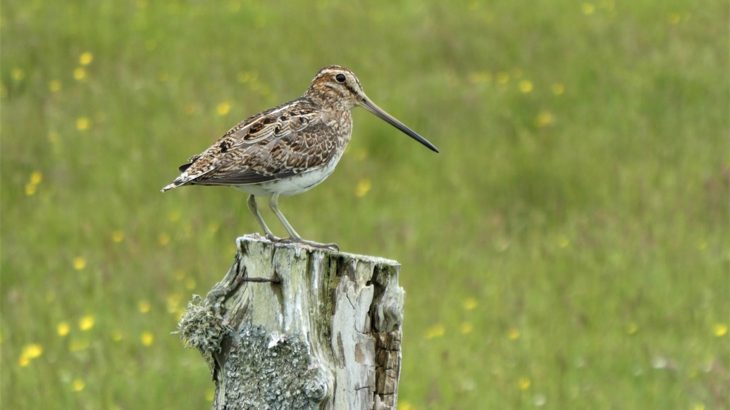Ecology is part of the Sustrans traffic-free routes and greenways design guide. It covers the need to determine the potential ecological impacts of a traffic-free route as early as possible in the development phase and seek professional advice on ecological matters.

Key principles
- The potential ecological impacts of a traffic-free route should be determined as early as possible in the development of a route.
- It is essential to seek professional advice on ecological matters at the earliest possible opportunity in the development of a scheme.
14.1 Ecological impact
14.1.1
Despite the environmental benefits of creating traffic-free routes, their construction can remove natural habitat, often in important locations. If done insensitively this can negatively affect nature conservation. As best practice, the ecological damage caused by construction projects should be minimised, and where practical, ecological enhancements incorporated.
14.1.2
Projects will also need to adhere to policies and legislation relating to designated nature conservation sites, habitats, species and conservation on a landscape scale. Whilst policies are enacted through the planning process, the legislation is statutory and applies at all times, whether or not a project requires planning permission. It is therefore important to seek professional advice on ecological matters at the earliest possible opportunity in the development of a project.
14.1.3
When designing a scheme, the priority should be to avoid any adverse impacts on important ecological features. Where this is not possible, mitigation and compensation measures will be required. The planning submission should set out what the ecological impacts are and how they are going to be reduced and compensated for.
14.1.4
Planning policy also requires ecological enhancements to be proposed as part of new developments wherever practical. These are ecological improvements beyond those required to compensate for damage. For a new traffic-free route this could include:
- Improving the condition of existing habitats along the route in the short-term, or through the adoption of a long-term habitat management plan.
- Creation of new habitats such as hedgerows or wildflower grasslands in the place of habitats with low importance to wildlife conservation.
- Specific measures for important species likely to be present at the site.
14.1.5
Once planning permission has been obtained, a licence will be required to carry out works affecting some species (e.g. bats, badgers and great crested newts) that would otherwise be illegal. To obtain a licence, it will be necessary to demonstrate the need for the development, that no suitable alternatives are available and that the conservation status of the species will be preserved.
14.2 Ecology surveys
14.2.1
The first step in an ecological investigation is likely to be a Preliminary Ecological Appraisal (PEA). This report will identify the possible ecological impacts from the work based on a desk study and a walkover survey.
It is therefore important that the ecologist undertaking this work is aware of all aspects of the proposal including those that might not be immediately obvious. For example, where repairs to structures, lighting, landscaping, level changes, storage areas or additional access points be proposed.
14.2.2
The PEA can be conducted at any time of the year as it identifies basic habitat types only, although spring or summer are the optimal survey times. This report is usually considered valid for approximately two years but must be updated if the scope of the work significantly changes.
The survey will also identify the presence, or potential for invasive species (e.g. Himalayan Balsam, Japanese Knotweed) along the route.
14.2.3
The PEA will make recommendations on the next steps for the project including:
- Further surveys that are necessary to more accurately characterise impacts.
- Measures to avoid/mitigate/compensate likely impacts.
- Requirements for consultation with relevant authorities.
14.2.4
Further surveys or species-specific surveys may be expensive, or could take a long time to complete. They are also time-bound, and can only be conducted at certain times of the year, which varies by species.
If the PEA is completed as early as possible in the design process, then it may be possible to amend the proposals to avoid a predicted impact altogether, thereby removing the need for additional surveys, licences and mitigation.
Avoiding impacts will also minimise the environmental impact and help conserve important natural features. Impacts can be avoided through changing the detailed design of the scheme, through timing of work or through changing the construction methodology.
Example of how to manage a potential ecological impact
A PEA for a new traffic-free route has identified that species-rich grassland with locally important orchids is present. The following steps should be followed to manage the potential impact on this important feature:
- Avoid: Can the route alignment and works area be adjusted to avoid the grassland altogether?
- Mitigate: If it cannot be avoided, can the proposal be adjusted to reduce grassland loss or avoid areas with more orchids? Can temporary disturbance be reduced by using protective mats?
- Compensate: Improve the extent or condition of retained grassland by interventions during construction or the adoption of an appropriate management plan?
- Offset: If on-site compensation cannot be secured, are there opportunities to contribute to local nature conservation strategies. For example, fund the long-term improvement of grassland condition in a local nature reserve?
- Enhance: For example, improving the condition or extent of the grassland even though damage to it has been avoided altogether or undertaking habitat improvements beyond what is necessary for compensation for the damage caused.

